Exploring the Potential of 3D Printing Technology
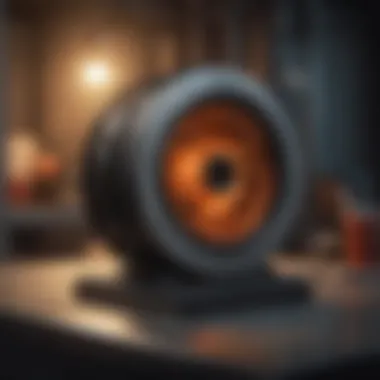
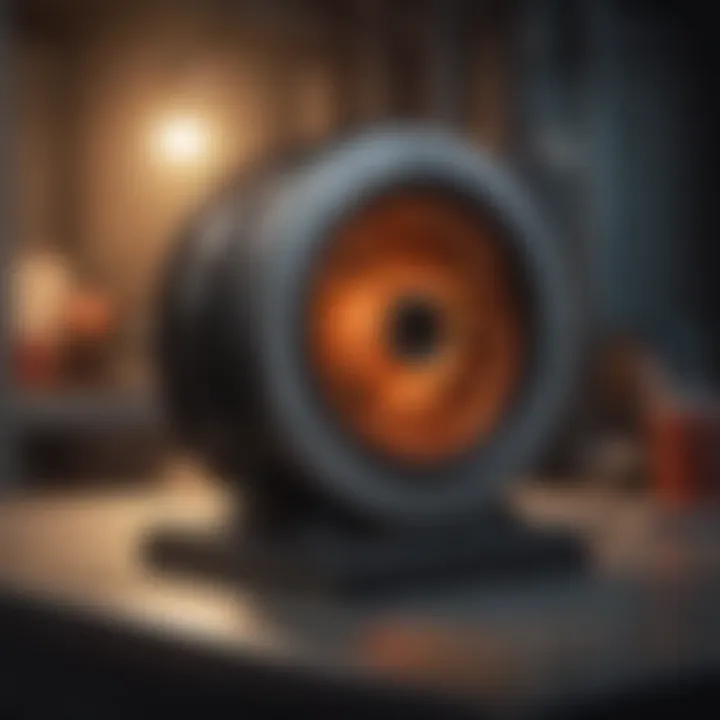
Intro
The landscape of technology is ever-changing, and 3D printing stands at the forefront of this transformation. Its applications are vast and varied, stretching from toy production to complex aerospace components. At its core, 3D printing is about layering materials to create finished products directly from a digital file. This capability opens doors to possibilities that were once merely figments of imagination.
The journey into 3D printing technology encompasses manufacturing, healthcare, education, and environmental aims. For instance, consider the role it plays in manufacturing. Companies increasingly turn to 3D printing to reduce waste and speed up the production cycle. Parts can be custom-made, which minimizes costs and boosts efficiency.
In healthcare, the possibility of creating bespoke implants tailored to individual patients is changing outcomes. Think about this: a patient with a unique bone structure can receive an implant that fits perfectly, rather than relying on a standard design. Such innovations aren't limited to physical objects; they touch the very essence of design and function.
The educational sector also benefits, with institutions like universities integrating 3D printing into their curricula. Students are not just learning theory; they are engaging with practical skill-building through hands-on experience. The idea of creating physical models from theoretical concepts encompasses more than just learning about science—that’s innovation in action.
Lastly, the environmental aspect cannot be overlooked. 3D printing presents a more sustainable approach to production. Fo instance, using recycled materials reduces landfill waste and provides an innovative way to manage resources effectively.
In summary, as we delve into the capabilities of 3D printing technology, we must explore its impacts, implications, and the challenges that accompany these advancements. This exploration will not only highlight the powerful role of 3D printing across various fields but also aim to foster a deeper understanding of its future potential.
Prelude to 3D Printing
3D printing stands at the intersection of innovation and practicality, shaping how we conceptualize, design, and manufacture products across various domains. As we delve into this topic, it’s crucial to grasp not only the mechanics of the technology but its broad implications for society. The significance of understanding 3D printing lies in its myriad applications that transcend traditional manufacturing practices.
This technique is more than just layering materials; it opens doors to customization and efficiency previously thought impossible. In the realms of manufacturing and healthcare, for example, the effects of 3D printing are both profound and transformative. The ability to produce intricate designs on demand fosters a shift toward more individualized products—be it customized medical implants or unique industrial components.
Moreover, the importance of this technology cannot be overstated when considering sustainability. 3D printing promotes material efficiency, reducing waste in the production process. Similarly, it can leverage recycled materials, contributing to a more circular economy.
Yet, to fully appreciate 3D printing, one must explore its historical underpinnings and understand its functionality. This narrative not only traces its roots but also sets the stage for the innovations that follow.
Definition and Historical Context
3D printing, or additive manufacturing, involves creating a three-dimensional object by adding layer upon layer of material, whether plastic, metal, or even biological matter. This process diverges from traditional subtractive manufacturing, where material is carved away from a solid block. The term '3D printing' broadly encompasses various technologies such as stereolithography, fused deposition modeling, and selective laser sintering.
The journey of 3D printing began in the early 1980s with Chuck Hull's invention of stereolithography. At that time, it could be hardly envisioned how this primitive method would evolve. Fast-forward to the 2000s; the technology started gaining traction as it was made more accessible to the masses. Open-source projects and affordability of materials have played a pivotal role in democratizing this technology, allowing hobbyists, entrepreneurs, and researchers alike to dive into the realm of 3D printing.
Today, 3D printing is a staple in multiple industries, constantly paving the way for unparalleled innovation.
How 3D Printing Works
Understanding the operational mechanics of 3D printing is essential for grasping its full potential. Generally, the process begins with a digital file—often created through computer-aided design (CAD) software. This file acts like a blueprint for the object to be printed.
Once the design is ready, the printer translates this file into instructions for layering materials. The layers are then built one at a time in accordance with the specified parameters, using methods tailored to the material being used. Here are key steps to how it works:
- Modeling: The idea is first conceived digitally and then translated into a 3D model.
- Slicing: This model is sliced into layers by specialized software. This helps the printer understand the structure and how to proceed.
- Printing: The additive printing process begins, where material is deposited layer by layer. Techniques may vary from the extrusion of thermoplastics to the curing of liquid resins.
- Post-Processing: Once printed, the object often undergoes cleaning and curing, sealing its final form.
By integrating these steps, one can appreciate how each phase contributes to not just a physical object but a tangible manifestation of creativity and innovation.
"3D printing is not just about creating objects; it’s about creating possibilities."
In summary, grasping the concept of 3D printing and its workings allows us to see the tectonic shifts it brings to industry and design—encouraging us to rethink what’s possible.
Manufacturing Transformations
The landscape of manufacturing is undergoing a seismic shift, primarily catalyzed by the advent of 3D printing. This technology has not only introduced new techniques for production but also redefined what is possible in terms of creativity and efficiency. The relevance of this transformation cannot be overstated, especially as industries seek to optimize their workflows and remain competitive in a fast-paced economy. 3D printing opens doors to manufacturing custom, on-demand products, trimming the fat off traditional methodologies that often rely on mass production. With the ability to fabricate intricate designs directly from digital files, manufacturers can now meet diverse consumer needs without incurring the whopping costs associated with conventional methods.
Customizable Production Processes
Crafting personalized products has never been easier thanks to 3D printing. Imagine a world where you can go online, pick a design, tweak it to fit your specific requirements, and receive the finished item at your doorstep in just days. This level of customization is now achievable for a range of products, from footwear like that of Nike, who utilize 3D printing to create tailored shoe insoles, to dental products where precise fittings are essential for comfort and effectiveness.
Such adaptability allows manufacturers to cater to niche markets that were often overlooked in traditional production lines. Not only does this address customer desires directly, but it also mitigates waste by producing only what is necessary. In an age where sustainability is paramount, this customizability stands out as a significant leap forward.
Cost Reduction Techniques
Cost reduction is another key element where 3D printing shines. The traditional routes of mass production involve copious initial investment in molds, resources, and labor. However, 3D printing circumvents many of these expenses. By using materials more efficiently—printing only what is needed without extra bulk—manufacturers are able to trim excess from their budgets.


Also, the reduction in labor costs plays a role here. 3D printers can often run unattended for hours, freeing up human resources for tasks that require greater oversight and creativity. For example, large companies like Boeing have reported substantial savings by adopting 3D printing for producing aircraft components. This not only decreases overheads but also shortens the production timeline.
Rapid Prototyping Advantages
One of the standout benefits of 3D printing is the rapid prototyping it affords. Traditional prototyping often involves lengthy processes, requiring multiple iterations and adjustments that can take weeks or even months. In contrast, 3D printing allows designers to crank out a prototype overnight. The feedback loop is drastically shortened, which speeds up the overall development process.
Consider automotive manufacturers, such as General Motors, which utilize rapid prototyping for testing new car parts. They can quickly produce variants, assess their performance, and iterate accordingly.
"Rapid prototyping accelerates not only design but also innovation. With less time in the production phase, ideas can come to fruition at lightning speed, allowing us to function in a continuously evolving market."
Healthcare Innovations
The influence of 3D printing technology on healthcare cannot be overstated. This innovation marks a paradigm shift in how medical devices are designed, produced, and even customized, leading us to a future where patients receive treatments tailored to their unique biological makeup. This section will unpack two key components of this healthcare revolution: personalized medical devices and bioprinting and tissue engineering. Both these aspects showcase the remarkable potential 3D printing holds, not only in enhancing patient outcomes but also in optimizing processes within the medical field.
Personalized Medical Devices
Personalized medical devices are steadily becoming the norm rather than the exception. The production of these devices using 3D printing allows for a level of customization that traditional manufacturing processes simply cannot match. With the use of digital scans and patient-specific data, healthcare providers can create devices that fit individual needs. For example, a patient with a unique limb structure can now receive a prosthetic that mirrors their exact anatomy, enhancing comfort and functionality.
Key benefits of personalized medical devices include:
- Improved Fit and Comfort: Customization means devices conform perfectly to the patient's morphology, significantly reducing discomfort during use.
- Enhanced Efficacy: When devices are tailored to individual needs, they often perform better, leading to improved therapeutic outcomes.
- Faster Production Times: What previously took weeks or even months can often be streamlined into a matter of days, thereby reducing the wait time for critical devices.
This customized approach presents a compelling case for adopting 3D printing in healthcare. However, it is essential to consider the implications regarding cost, regulation, and manufacturing ethics that come with this innovation.
Bioprinting and Tissue Engineering
Bioprinting offers an exciting frontier in regenerative medicine, utilizing living cells alongside traditional materials to construct tissues. Imagine creating a liver or heart tissue layer by layer; that’s the vision that bioprinting is striving toward. This technology not only aims to create replacement organs but also to advance our understanding of human biology and disease.
Some critical aspects of bioprinting and tissue engineering include:
- Organ Replacement: The long-term goal is to bioprint organs that can be transplanted, addressing the severe shortage of donor organs.
- Drug Testing and Development: Instead of relying on animal models, bioprinted tissues can act as more accurate models for testing new drugs, potentially speeding up development times and ensuring greater safety for human use.
- Personalized Medicine: Similar to personalized medical devices, bioprinting allows for the development of tissues tailored to individual patients, further bridging the gap between standard treatment and individualized healthcare.
"The promise of 3D printing in healthcare lies not just in the speed of production but in its ability to rethink what is possible in the realm of medical treatment and patient care."
As the technology continues to evolve, regulatory hurdles and ethical considerations will need to be addressed. Nonetheless, 3D printing paves the way for transformative breakthroughs in the healthcare sector, making personalized treatments more accessible and creating avenues previously thought impossible.
Architectural and Construction Applications
The intersection of 3D printing technology with architecture and construction is fostering innovative approaches that redefine traditional parameters in these fields. As urban populations rise and the demand for sustainable living increases, the construction industry faces significant challenges. Embracing 3D printing could provide much-needed solutions. This section delves into two pivotal aspects of this conversation: sustainable housing and design flexibility. Both highlight the transformative potential of 3D printing in reshaping the architectural landscape as we know it.
3D Printing for Sustainable Housing
Sustainable housing solutions have become a pressing issue across the globe. Particularly in regions where housing shortages are rampant, 3D printing emerges as a beacon of hope.
Imagine a scenario where entire homes can be erected in a matter of hours, utilizing minimal materials while ensuring durability. This process minimizes waste, as the additive nature of 3D printing allows for precision in material usage. Notably, technologies like the concrete-based 3D printing method can dramatically reduce the carbon footprint typically associated with traditional construction methods. By employing locally sourced materials, communities could further enhance sustainability while economically revitalizing nearby industry.
Moreover, the affordability of 3D printed homes can't be overlooked. Traditional methods can often set back prospective homeowners significantly, but with this technology, costs can be slashed. This move not only provides shelter but uplifts communities through accessible living spaces, especially for low-income families and disaster-struck areas.
"3D printing in construction isn’t just about speed; it’s about revolutionizing how we think about housing and its accessibility."
Design Flexibility and Innovation
Design flexibility is one of the most exciting aspects of integrating 3D printing into architectural practices. Traditional building materials can impose certain limitations on creativity, often leading to repetitive and uninspired designs. With 3D printing, architects have the freedom to experiment with new shapes and structures. This ability to produce complex geometries can lead to innovative buildings that stand out, serving both functional and aesthetic purposes.
For example, intricate facades can be printed, not just for beauty but also for enhanced energy efficiency. Structures can be designed to maximize natural light or airflow depending on environmental conditions. Each design can cater to specific needs and preferences, effectively tailoring buildings to the demographics of their inhabitants.
Engaging with 3D printing doesn’t just spark creativity; it encourages cross-disciplinary collaboration. Architects, engineers, and environmental scientists can work in concert to explore solutions that are both practical and visionary.
To wrap up, 3D printing in architecture is breaking down barriers. It’s not just a passing trend; it's a fundamental shift that offers both innovative and sustainable solutions for society's growing needs.
Educational Tools and Resources

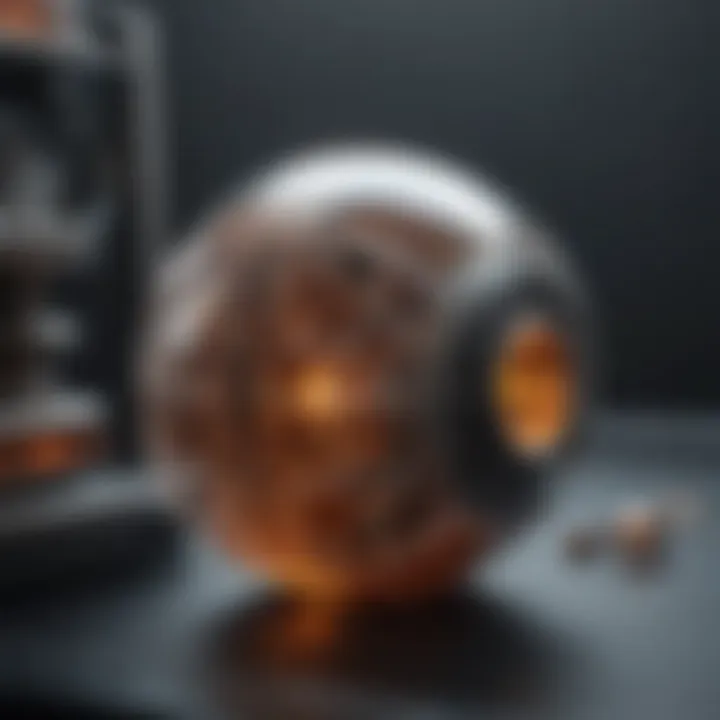
The integration of 3D printing in educational settings has ushered in a new era of interactive and personalized learning experiences. This technology offers unique resources that help augment traditional methods, allowing educators to convey complex concepts in an engaging manner. Utilizing 3D printing not only facilitates a hands-on approach for learners but also prepares them for future career paths in technology-driven fields.
Enhancing Learning Experiences
3D printing transforms the conventional classroom into a dynamic learning environment where students can interact with tangible representations of their subjects. When complex ideas, from molecular structures in chemistry to architectural designs in engineering, are visually and physically represented, understanding deepens. For instance, a biology class may leverage 3D-printed models of organs to teach students about anatomy and physiology. This experience makes abstract concepts more concrete and relatable.
Moreover, hands-on projects help students develop critical thinking and problem-solving skills. As they navigate design challenges—while using programs like Tinkercad or Fusion 360—they learn to iterate on their designs, understand the materials they are working with, and troubleshoot issues that arise during the printing process.
In the era of remote learning, educational institutions have started incorporating 3D printing into their curricula via online resources. Students can access virtual tools that enable them to design and print projects from home, bridging the gap caused by physical distancing. This adaptability showcases how educational resources can evolve, providing opportunities for students who may otherwise feel disconnected.
Fostering Creativity and Problem Solving
Encouraging creativity through 3D printing goes well beyond simple design tasks; it fosters an inventive spirit that challenges students to think differently. For example, during a project, students might work collaboratively to create a prototype for a new product that solves real-world issues. Engaging in these types of projects helps them learn how to communicate their ideas effectively and incorporate feedback, which is invaluable in professional environments.
Additionally, 3D printing allows for rapid prototyping—giving students the chance to quickly design, test, and modify their creations. This cycle of iteration not only hones their technical skills but also builds resilience and adaptability. A student might start with a concept, print a faulty version, and then refine their design based on what they learned from that first attempt.
"The ability to iterate quickly opens up new avenues for experimentation—students can explore the limits of their ideas without the burden of time and resource loss."
By incorporating design thinking principles, educators can help students approach problems systematically. They learn not just to create but to apply a logical framework to solving challenges, which is a skill fundamental to many disciplines. In a world where creativity meets technology, 3D printing serves as a catalyst for productive exploration—a playground where ideas come to life, and solutions unfold.
In summary, the educational tools and resources provided by 3D printing are invaluable. They not only enhance learning experiences through tangible engagement but also foster a culture of creativity and problem-solving. Students leave the classroom equipped not only with knowledge but also with the essential skills needed to navigate the complexities of the modern world.
Environmental Considerations
As the world increasingly grapples with environmental issues, the significance of 3D printing technology's impact on sustainability has never been more pronounced. This section delves into how this innovation intertwines with eco-friendly practices by focusing on recycling and material efficiency, as well as its potential in waste reduction. Beyond its impressive capabilities in manufacturing and design, 3D printing could pave the way for a more sustainable future.
Recycling and Material Efficiency
3D printing technology inherently encourages the use of material in a more efficient way. Traditional manufacturing methods often involve subtractive processes—where large volumes of material are cut away to achieve the final form. This can lead to significant waste. In contrast, 3D printing employs an additive process, which builds objects layer by layer. This not only minimizes material usage but also allows for more complex designs that can be achieved with less raw material.
Additionally, recycling materials is a growing trend in the 3D printing realm. Many printers can utilize filament produced from recycled plastics, which helps to reduce the demand for virgin materials. This practice does not just cut down on waste; it also fosters a circular economy where materials are reused continually. Whether it’s using filament from discarded products or even creating new objects from industrial scrap, the innovation keeps resources flowing efficiently and reduces the environmental footprint.
"In the pursuit of sustainable manufacturing, 3D printing holds the promise of transforming waste into valuable resources."
Impact on Waste Reduction
Waste reduction is another compelling benefit of 3D printing technology. By allowing for precise production that closely aligns with requirements, companies can drastically reduce overproduction that usually might occur with traditional methods. Customized on-demand manufacturing means items are created exactly as needed, significantly diminishing surplus materials and products that typically end up in landfills.
In sectors such as construction, 3D printing has shown a remarkable ability to cut down waste. For instance, by creating components with careful planning, builders can minimize scrap material. Moreover, controlling the amount and type of material used means that less is wasted during the construction phases of projects.
Furthermore, employing bioprinting techniques in healthcare could transform how we think about medical waste. By creating patient-specific organs through bioprinting, the need for mass-produced components that could go underutilized or discarded is diminished.
Summary
Overall, the environmental considerations of 3D printing technology present a compelling narrative of potential transition towards sustainable manufacturing. Through the promotion of recycling, increased material efficiency, and a significant reduction in waste generation, this technology does not merely offer innovative production capabilities, but it also suggests a path forward to treat our planet with more care and responsibility.
Challenges of 3D Printing
The rapid growth of 3D printing technology has ushered in a new era of possibilities, yet it does not come without its significant challenges. Understanding these hurdles is crucial for stakeholders at various levels—from policymakers to industry professionals. Not only do the challenges of 3D printing highlight the technology's limitations, but they also present areas for improvement and innovation that could redefine the landscape moving forward.
Intellectual Property Issues
The very nature of 3D printing fosters ease of duplication and reproduction. This characteristic can clash head-on with the concept of intellectual property, leading to legal quandaries. The question arises: who owns a digital file that can create a physical object? For instance, if someone downloads a file for a 3D-printed guitar and manufactures it without permission, it raises the specter of copyright infringement.
Moreover, the democratization of design through platforms sharing 3D models has blurred ownership lines. Inventors and creators must be hyper-aware of copyright laws and licensing agreements. Without robust frameworks in place to protect these rights, we open the floodgates to potential exploitation. This situation complicates matters for startups, who may hesitate to invest in new designs if they fear their innovations could be swiftly copied.
Quality Control and Standards
Quality assurance is another pressing issue within the realm of 3D printing. The variance in printers, materials, and technologies means that consistent quality can often be elusive. Imagine ordering a prototype from three different companies using the same design files—each one may produce a slightly different product based on their printer's capabilities and material characteristics. This inconsistency can have dire consequences in sectors like aerospace or healthcare, where precision is paramount.
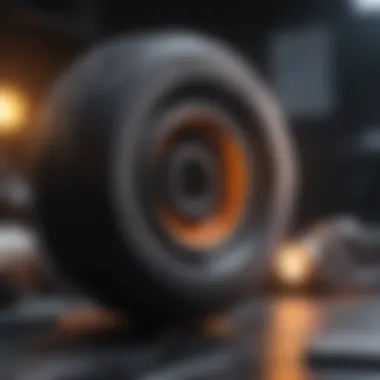
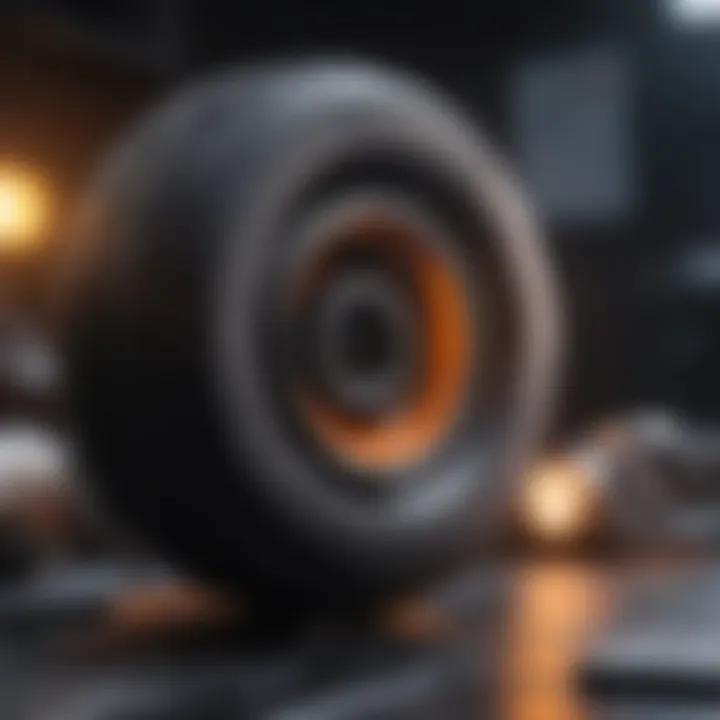
Without universally accepted standards, it becomes nearly impossible to gauge the durability or safety of printed objects. The establishment of industry standards could streamline expectations and improve quality roots in manufacturing. The lack of such standards currently hampers the technology's potential use in mission-critical applications.
Regulatory Hurdles
Navigating the regulatory landscape is no small feat, either. Governments around the world grapple with how to effectively regulate this rapidly evolving technology. Many existing laws have not evolved to address the unique aspects of 3D printing. For example, if a manufacturer produces a faulty part that leads to an accident, determining legal liability can be murky under current law.
Additionally, in sectors like pharmaceuticals, the creation of custom drugs and medical devices via 3D printing introduces new complexities. How do regulators ensure that these products meet safety and efficacy requirements?
Here are some key points:
- Fragmented Regulations: Different countries have various rules relating to 3D printing technology. This inconsistency complicates international trade and cooperation.
- Evolving Safety Standards: Emerging technologies require adaptations in safety standards that haven’t yet been fully realized or implemented.
It's essential to develop adaptable frameworks that can respond to the rapid pace of technological change while ensuring public safety and promoting innovation.
Overall, while the capabilities of 3D printing technology are vast, its challenges—be it intellectual property issues, quality control, or regulatory hurdles—must not be overlooked. Addressing these challenges head-on can unlock further potential and establish a solid foundation for future advancements.
Future Trends in 3D Printing
The landscape of 3D printing is constantly evolving, driven by innovations in technology and shifting market demands. Understanding future trends in this field is crucial for stakeholders, including manufacturers, healthcare institutions, educators, and researchers. These trends not only influence how current applications develop but also shape the future operational framework across sectors.
Advancements in Materials Technology
Materials science is the backbone of 3D printing innovation. Today, it's not just about plastic and resin; the focus is on diversifying the materials that can be used. New materials are being developed that are more robust, flexible, and sustainable. For instance, we now have composites that combine different material properties, like metal-infused plastics. This brings added strength to printed parts, making them suitable for industrial applications where traditional 3D printed materials would falter.
Some noteworthy advancements include:
- Biodegradable Filaments: Following environmental concerns, researchers have crafted filaments that break down naturally, reducing plastic waste.
- Metals and Alloys: Advances in powder metallurgy are allowing for intricate metal designs previously deemed impossible, opening doors in aerospace and automotive sectors.
- Advanced Ceramics: The ability to print ceramics not only enhances aesthetic applications but also opens avenues in dental and medical applications.
Incorporating these materials leads to not just better quality products but also smaller carbon footprints. In looking to the future, customized materials tailored for specific applications will likely become the norm, enhancing the potential for specialized production without the extensive lead times associated with traditional processes.
Emergence of Smart Manufacturing
The term 'smart manufacturing' refers to the integration of digital technologies into manufacturing processes. As 3D printing technology advances, the impact of smart manufacturing becomes increasingly relevant.
Here’s what this entails:
- Industry 4.0 Integration: The seamless connection of 3D printers with IoT devices will allow real-time data exchange and machine learning applications. This leads to optimizing production schedules based on demand fluctuations, which improves efficiency and reduces waste.
- Advanced Software Solutions: The rise of artificial intelligence and predictive analytics in design and manufacturing will foster the creation of parts based on performance data. Such advancements could pave the way for designs that are not just functional but engineered for optimal performance under various conditions.
- Customized Production Lots: With smart manufacturing, batch sizes can be as small as needed. This effectively meets the consumer's demand for personalized products without sacrificing efficiency.
"The future of manufacturing is not just about faster machines; it’s about smarter processes that leverage technology for a more adaptable and efficient industry."
In summary, future trends in 3D printing promise to shape the way industries operate, highlighting the need for professionals and educators to stay abreast of these developments. The convergence of advanced materials and smart manufacturing will redefine possibilities, pushing the boundaries of what 3D printing can achieve. It fosters not only innovation but also a more sustainable approach to production.
Culmination
The realm of 3D printing technology is vast and continually evolving, impacting various sectors in profound ways. This article has detailed multiple facets of 3D printing, ensuring a well-rounded understanding of its significance.
One of the core elements discussed is how 3D printing enables customizability in manufacturing, which posits it as a game-changer. With the ability to produce tailored goods at an unprecedented scale, industries can leverage this technology to meet specific consumer demands, enhancing customer satisfaction while reducing waste - a vital benefit in today’s environmentally conscious landscape.
Additionally, the exploration of healthcare solutions reveals the potential of 3D printing to create personalized medical devices and even functional biological tissues. This capability not only could revolutionize treatments but also pave the way for more individualized patient care.
From architectural endeavors to educational applications, the translation of conceptual designs to tangible outcomes is a testament to the technology's flexibility and innovative tendencies. 3D printing's adaptability caters to the unique requirements of each domain it touches.
However, it is crucial to note that with every flower blooms a thorn: intellectual property dilemmas and regulatory challenges represent significant hurdles that the industry must navigate. These considerations highlight the importance of developing robust frameworks to ensure the technology can flourish without infringing on rights or safety standards.
“The future belongs to those who believe in the beauty of their dreams.” — Eleanore Roosevelt
In summation, the insights presented underscore the transformative power of 3D printing. As we stand on the precipice of continued advancements, it's evident this technology will only become more integrated into our daily realities, making meticulous examination imperative.
Recap of Key Points
- 3D printing fosters high levels of customization and efficiency in production.
- The technology has major implications for healthcare, including personalized medical solutions.
- Architectural applications focus on sustainability and innovative designs.
- Challenges include intellectual property issues and regulatory compliance.
- Future trends indicate a rise in smart manufacturing and advancements in materials technology.
Final Thoughts on the Future of 3D Printing
While anticipating the future of 3D printing, the landscape seems promising with numerous paths forwarding. Emerging advancements in materials and the advent of smart manufacturing processes signal a shift toward even more innovative applications.
As technology advances, it’s likely that 3D printing will become more accessible beyond industrial applications, possibly, allowing individual creators and startups to harness its capabilities. Embracing collaboration among various stakeholders will be vital in overcoming existing challenges and fully realizing the benefits of 3D printing.



